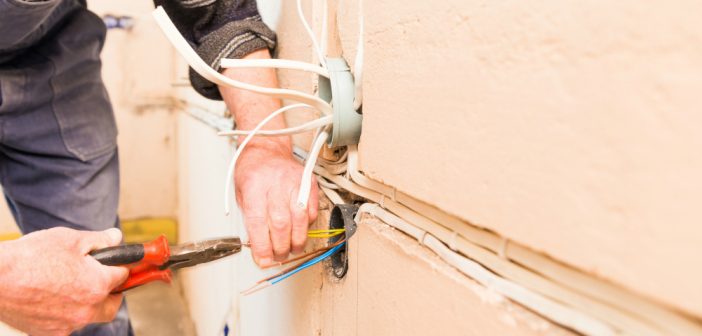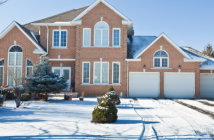Owning a home is a huge financial responsibility especially if you suspect that your home might have faulty wiring. Many home owners are unsure of how to determine if there is a problem. According to the US Fire Administration, electrical home fires result in approximately 280 deaths and 1125 injuries each year not to mention the loss of property resulting in over 1 billion dollars of damages. Here are some warning signs that this may be the case and you might want to consult an electrician.
Check Outlets
Depending on the age of the home this could be an expensive fix. If your home is more than 40 years old, the first thing to check is whether you have two prong outlets or the more updated version of three prong outlets. Older homes used two prong outlets and did not have grounding. This can be repaired with changing out all the two prong outlets to GFCI (ground fault circuit interrupter) but this does not provide grounding to an appliance plugged into them. This kind of fix only repairs that pesky problem of having a three prong cord that just will not fit into that old two prong outlet. This in no way fixes the underlying issue of not having proper grounding in your home. Often found in homes built from 1880 to the 1930’s is what is called knob and tube wiring. This means that there are single copper conductors run in the walls and joists connected by porcelain insulting tubes. This knob and tube wiring does not support the energy consumption of modern appliances and will eventually fail. The best solution, but also the most costly, is to rewire your entire house which will most likely also result in having to upgrade the electrical panel.
Check Circuits
If you find yourself having to make frequent trips to the electrical panel to reset the circuits or change out blown fuses you might want to consult an electrician to make sure that you haven’t overloaded the circuits by plugging in too many appliances. Having too much load on a circuit can result in an electrical fire. For example, if you upgrade your kitchen, each major appliance should be on its own circuit to avoid this problem.
If you find the lights flickering or dimming every time the refrigerator turns on, you might have a loose connection with the wiring or the electrical panel is overloaded. Older wiring often used paper or cloth casing which will corrode, a wire could have come loose from a wire nut or be broken at the source. The outlets and switches may show a sign of scorch marks around the box or even inside the receptacle.
Look for Loose Outlets & Plugs
If you are constantly changing the same light bulbs, then the wiring is not functioning correctly. Other common problems with outlets and switches include buzzing, sizzling and crackling when you plug or unplug or flip a switch. This would indicate that there is a problem. If the outlet is loose and the plugs fall out on its own or if you go to plug something in and get an electrical shock, it might be time to change the outlet.
Inspect the Wiring
Inspect the wiring to see if the wire itself is in good shape (not cracked, broken or missing.) Check to see if the ground wire is copper or aluminum. Aluminum wiring was used during the 1960’s and 1970’s since it was cheaper than copper but it is no longer considered safe. This doesn’t mean that you have to rewire your house if this is the case, you just have to be aware if you add any copper wiring into the electrical system, this will cause the aluminum will degrade when in direct contact with copper which can lead to an electrical fire. Any receptacle added needs to say that it is AL-compatible. Modern wiring relies on copper and is the standard for an upgraded wiring system since it is more conductive and therefore more efficient at carrying the electrical current throughout your home.
Extension Cords
If you feel the need to use an extension cord for servicing your electrical needs, you don’t have enough outlets in your home. In some cases, homeowners have found that previous owners have used extension cords in the walls. This is against code and presents a huge fire hazard. It is never a good idea to put an extension in the wall where it cannot be inspected for any safety issues. Extension cords can also pose a tripping risk if used in a high traffic situation or a severe fire hazard if too many items are plugged into them. This can cause the extension cord to generate heat and become an ignition source. Covering the extension cord can also generate heat which would be another fire hazard.
If you are unsure of what may be causing the electrical problem in your house it is prudent to consult an electrician. The cost of having an electrical fire and the peace of mind of knowing that you have done your best to minimize this risk is well worth the investment.








